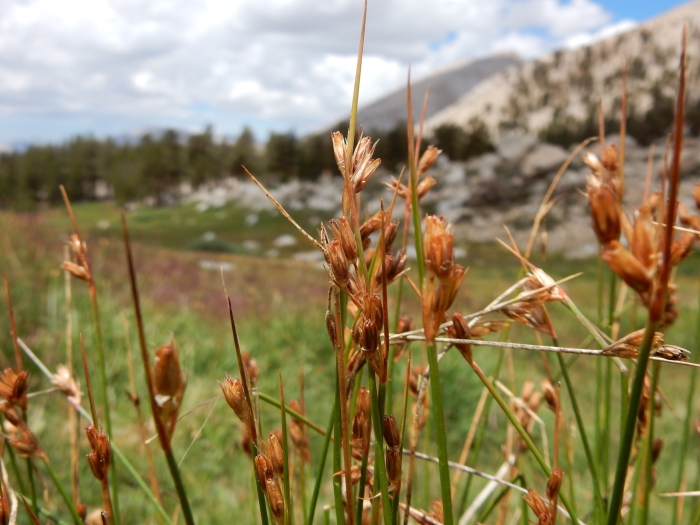Parry’s Rush
(Juncus parryi)
Parry’s Rush (Juncus parryi)
/
/

© Matt Lavin
CC BY 4.0
Image By:
© Matt Lavin
Recorded By:
Copyright:
CC BY 4.0
Copyright Notice:
Photo by: © Matt Lavin | License Type: CC BY 4.0 | License URL: http://creativecommons.org/licenses/by/4.0/ | Uploader: mattlavin | Publisher: iNaturalist |
























Estimated Native Range
Summary
Juncus parryi, commonly known as Parry’s rush, is a rhizomatous perennial herb native to the mountainous regions of western North America, including British Columbia, Alberta, California, and Colorado. It is particularly adapted to subalpine and alpine zones, often found in moist meadows, along streams, and in rocky talus habitats. Parry’s rush typically forms dense clumps reaching up to 12 inches in height, with distinctive short, thread-like leaves at the stem bases. The inflorescence consists of a cluster of small, brownish flowers, each accompanied by a long, cylindrical bract that extends beyond the flowers, giving the appearance of a continuation of the stem.
Parry’s rush is valued for its ability to thrive in challenging mountain environments and is often used in native plant gardens and restoration projects to stabilize soil and support local ecosystems. It requires minimal maintenance once established, making it a practical choice for gardeners seeking low-care plants. In cultivation, it prefers full sun to part shade, moist to wet soil conditions, and can tolerate a range of soil types, including those with poor drainage. While not known for showy flowers, its structural form and adaptability make it a useful addition to water features or naturalistic plantings.CC BY-SA 4.0
Parry’s rush is valued for its ability to thrive in challenging mountain environments and is often used in native plant gardens and restoration projects to stabilize soil and support local ecosystems. It requires minimal maintenance once established, making it a practical choice for gardeners seeking low-care plants. In cultivation, it prefers full sun to part shade, moist to wet soil conditions, and can tolerate a range of soil types, including those with poor drainage. While not known for showy flowers, its structural form and adaptability make it a useful addition to water features or naturalistic plantings.CC BY-SA 4.0
Plant Description
- Plant Type: Grass
- Height: 1-2.5 feet
- Width: 0.5-1 feet
- Growth Rate: Slow
- Flower Color: N/A
- Flowering Season: Summer
- Leaf Retention: Evergreen
Growth Requirements
- Sun: Full Sun, Part Shade
- Water: Medium
- Drainage: Fast
Common Uses
Erosion Control, Low Maintenance, Water Garden
Natural Habitat
Moist meadows, streambanks, and rocky talus in subalpine and alpine zones
Other Names
Common Names: Parry’s Rush
Scientific Names: , Juncus parryi, Juncus drummondii var. parryi,
GBIF Accepted Name: